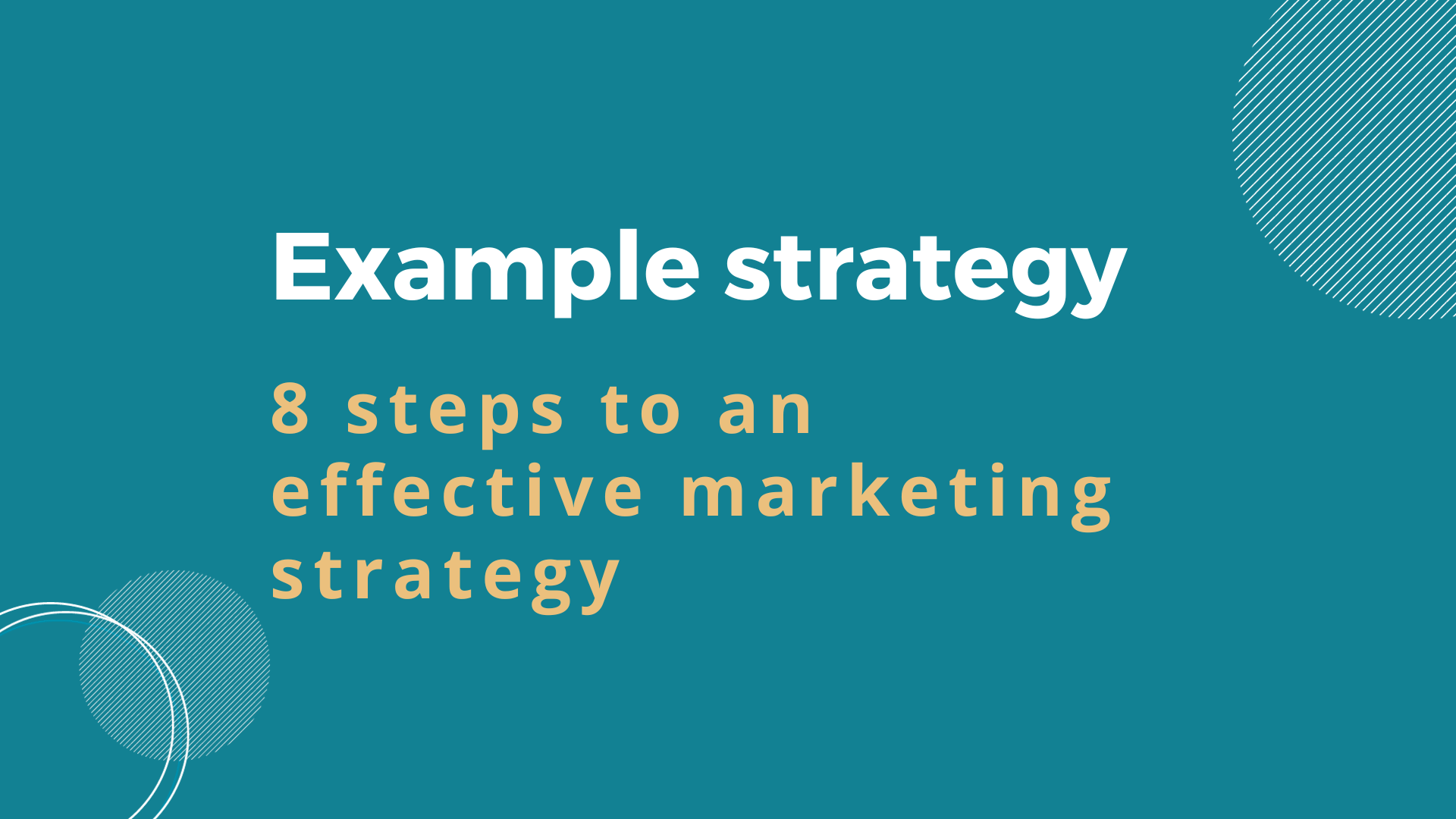
8 Step Example of an Effective Marketing Strategy
Unleashing the Marketing Power: A Step-by-Step Example of an Effective Marketing Strategy
In today’s competitive business landscape, a powerful marketing strategy can make all the difference in capturing customer attention and driving sales. Aside from knowing why a strategy is so important, it’s important to know how to create an effective marketing strategy that truly unleashes the power of your brand? Look no further – in this article, we will provide you with a step-by-step example of what a successful marketing strategy looks like.
Learn about:
- defining your target audience
- conducting market research
- designing compelling brand messaging
- implementing a multi-channel approach
This example strategy is the same process I take all my Reset Marketing coaching students through. It will help you navigate the intricacies of the marketing strategy world and ultimately boost your brand’s visibility, engagement, and profits.
- Understanding the target audience
Understanding your target audience is the foundation of any successful marketing strategy. To truly connect with your customers, you need to have a deep understanding of who they are, what they want, and how your product or service can meet their needs.
Start by conducting market research to gather demographic information, such as age, gender, location, and income level. This will help you create customer personas, which are fictional representations of your ideal customers. These personas will guide your marketing efforts and ensure that your messaging resonates with the right people.
Once you have a clear picture of your target audience, dig deeper to understand their motivations, pain points, and desires. What problems are they trying to solve? What are their aspirations? By gaining a deep understanding of their needs, you can tailor your marketing messages to speak directly to them.
Remember, the more specific you can be in defining your target audience, the better. Don’t try to appeal to everyone – instead, focus on a niche market that you can serve exceptionally well. This will help you stand out from the competition and build a loyal customer base.
2. Goals and objectives
Before diving into the implementation of your marketing strategy, it’s essential to set clear goals and objectives. These goals will serve as a roadmap for your marketing efforts and help you stay focused on what matters most.
Start by defining your overall marketing goals. Are you looking to increase brand awareness, drive sales, or build customer loyalty? Once you have a clear goal in mind, break it down into smaller, measurable objectives. For example, if your goal is to increase sales, your objectives could be to achieve a certain percentage increase in monthly revenue or to acquire a specific number of new customers.
Remember, goals and objectives should be flexible and adaptable. As you gather data and insights from your marketing efforts, be prepared to adjust your goals if necessary. The key is to stay agile and responsive to the ever-changing needs of your target audience and the market.
3. Conducting market research
Market research is a crucial step in developing a successful marketing strategy. It provides valuable insights into your target audience, competitors, and industry trends, allowing you to make informed decisions and stay ahead of the curve.
Start by analyzing your competitors. Who are they? What are their strengths and weaknesses? How do they position themselves in the market? By understanding your competitors’ strategies, you can identify gaps and opportunities that you can capitalize on.
Next in this marketing strategy example, gather data on industry trends and customer behavior. Are there any emerging trends that could impact your business? What are the current pain points and desires of your target audience? By staying up to date with the latest trends and insights, you can tailor your marketing messages to resonate with your customers.
4. Developing a unique selling proposition (USP)
It’s essential to have a unique selling proposition (USP) that sets your brand apart from the competition. Your USP is what makes your product or service unique and compelling to your target audience.
Start by identifying your brand’s unique strengths and qualities. What do you do better than anyone else in your industry? What sets you apart from your competitors? This could be anything from superior product quality to exceptional customer service or innovative features.
Distill it into one concise sentence: Why should customers choose you over your competitors?
Strategy Tip: Remember, your USP should be customer-focused. It should highlight the benefits and solutions your product or service provides, rather than just listing features. By clearly communicating your unique value proposition, you can attract and retain loyal customers who see the value in what you offer.
5. Creating a marketing budget
A marketing budget is an essential tool for planning and allocating resources to your marketing activities. It ensures that you have the necessary funds to execute your marketing strategy effectively and achieve your goals.
When I start a new marketing strategy with my marketing coaching students, we start by determining how much you can afford to spend on marketing. Aim to allocate a percentage of your revenue to marketing, keeping in mind that this may vary depending on your industry and growth stage.
Next, prioritize your marketing activities based on their potential impact and cost. Identify the channels and tactics that are most likely to reach your target audience and drive results. Allocate a budget to each activity, taking into account factors such as advertising costs, content creation, and campaign management.

6. Choosing marketing channels and tactics
Choosing the right marketing channels and tactics is crucial for reaching your target audience effectively. With so many options available, it’s important to focus on the channels that are most likely to resonate with your customers and achieve your marketing goals.
Start by considering your target audience’s preferences and behavior. Where do they spend their time online? Which platforms do they use to gather information and make purchasing decisions? By understanding their media consumption habits, you can choose the channels that will have the greatest impact.
Next, consider the type of product or services you offer. Some channels, such as Instagram and content marketing, are more suited for building brand awareness and engagement. Others, such as search engine optimization (SEO) and paid advertising, are better for driving direct sales or B2B business.
don’t forget to experiment and test different channels and tactics. Marketing is not a one-size-fits-all approach, and what works for one brand may not work for another.
7. Implementing the marketing strategy
Now that you have a clear understanding of your target audience, goals, market research, USP, budget, and chosen marketing channels, it’s time to put your strategy into action.
Start by creating a detailed marketing plan that outlines the specific activities, timelines, and responsibilities for each channel and tactic. This will help you stay organized and ensure that you’re executing your strategy effectively.
Strategy tip: Don’t forget to create compelling brand messaging that communicates your USP and resonates with your target audience.
8. Measuring and analyzing marketing results
Measuring and analyzing the results of your marketing efforts is essential for understanding what works and what doesn’t. It allows you to identify areas of improvement, optimize your strategy, and allocate resources effectively.
Start by tracking key metrics that align with your marketing goals and objectives. These could include website traffic, conversion rates, email open rates, social media engagement, and customer acquisition cost. Use analytics tools to gather data and generate marketing reports each month.

